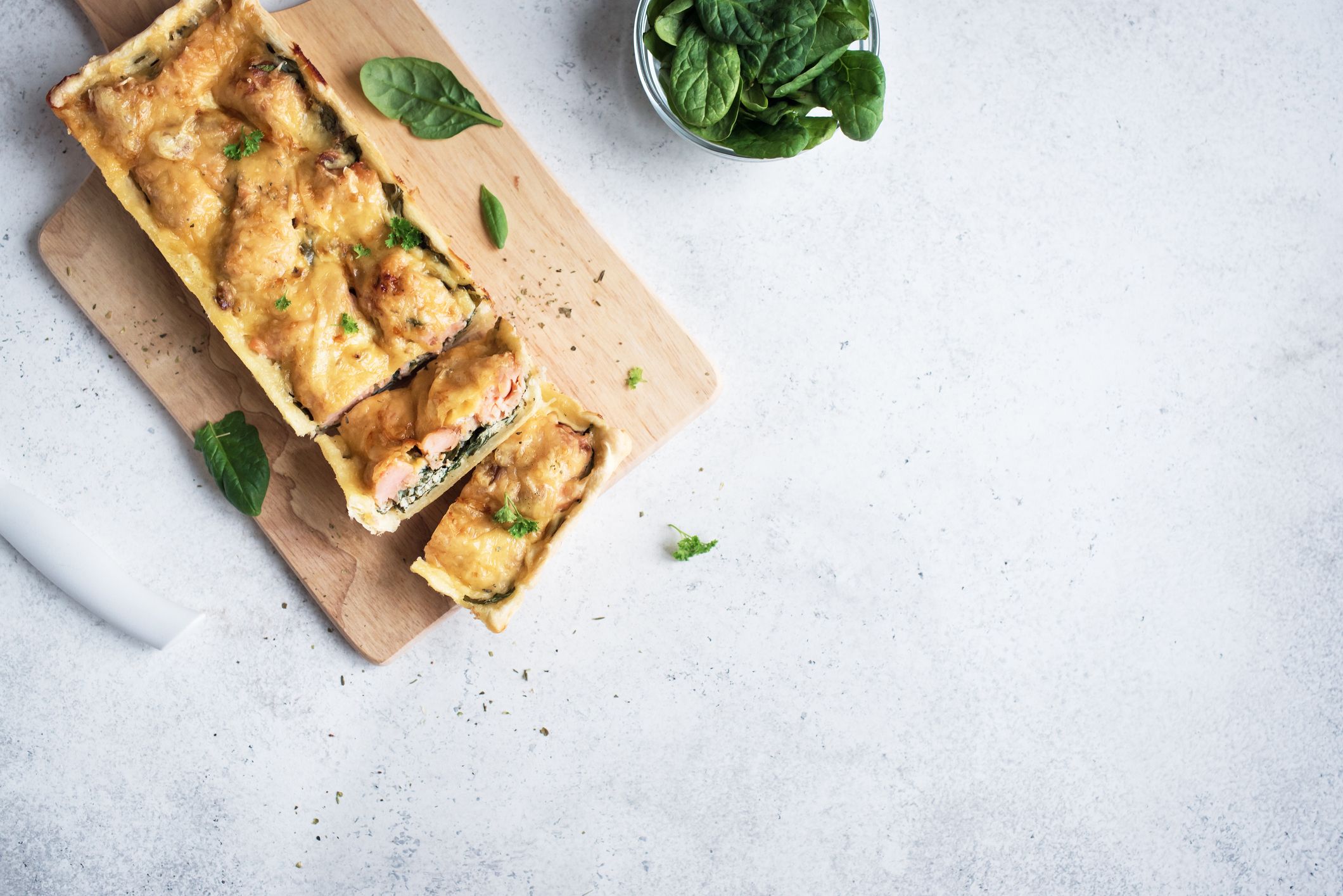Gordon Ramsay's salmon en croûte recipe
Your folders
Your folders
Cook Time: 25 minutes
Total: 25 minutes
Servings: 2.5
Cost: $17.73 /serving

Ingredients
Export 9 ingredients for grocery delivery
Instructions
Step 1
Check the salmon for pin bones, removing any that you find with tweezers, then cut in half. Line a baking tray with a lightly oiled piece of foil. Mix the softened butter with the lemon zest, basil, dill and some salt and pepper in a bowl, to make the filling. Pat the salmon fillets dry with kitchen paper, then season lightly with salt and pepper. Spread the herb butter over one fillet, on the boned side, and the mustard evenly on the other fillet. Sandwich the two salmon fillets together, in opposite directions so both ends are of an even thickness. Roll out the pastry thinly on a lightly floured surface to a rectangle, the thickness of a £1 coin and large enough to enclose the salmon. Put the salmon parcel in the centre of the pastry and brush the surrounding pastry with egg. Bring up the edges, trimming off any excess, and tuck them in before folding the rest of the pastry over to form a neat parcel. Carefully turn the whole thing over so that the seam is underneath and place on the prepared baking tray. Brush the pastry with beaten egg. Lightly score a herringbone or cross-hatch pattern using the back of a knife. Sprinkle with salt and pepper. Cover loosely and chill for 15 minutes. Meanwhile, heat the oven to 200°C/400°F/gas mark
Step 2
Bake the salmon for 20-25 minutes, until the pastry is golden brown and crisp. To test if ready, insert a skewer into the middle. It should feel warm for medium cooked salmon. A piping hot skewer indicates that the fish is well done. Rest the salmon for 5 minutes, then cut into portions using a serrated knife. Serve with hollandaise sauce, new potatoes and broccoli or minted peas.